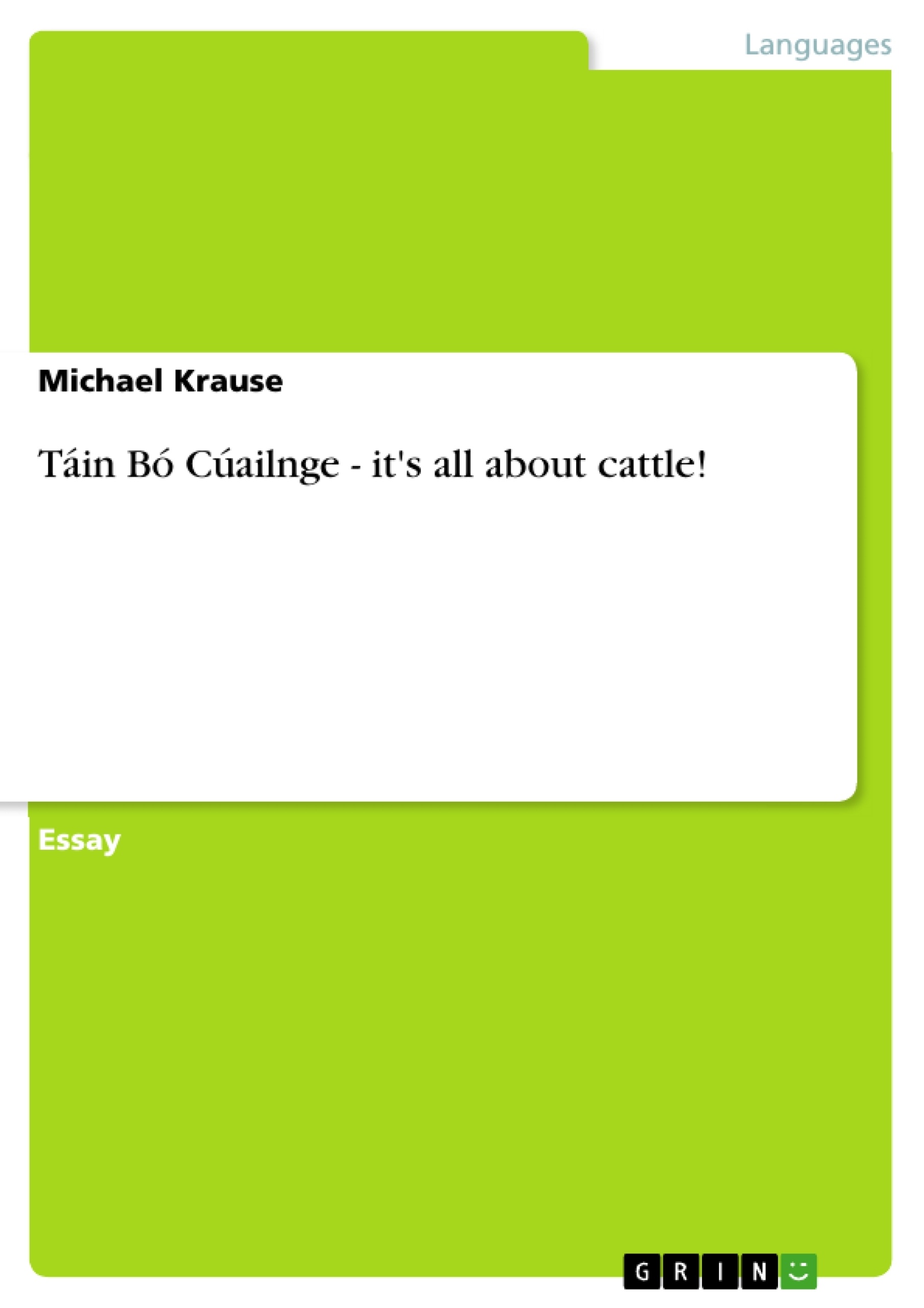Early Celtic people were surrounded on all sides by the natural world. They were continually aware of its presence, and their utter dependence on its balance and fertility for their basic nurture and comfort. Even for the most powerful king a harsh winter or a blight on the soil was a serious and sometimes life-endangering issue. Although Ireland’s mythology did not completely survive the conversion into Christianity, a large part of it was preserved in Irish literature. 70 Originally it was recorded in oral form and passed down through the centuries by the Druids, an intellectual religious group, not unlike the Christian monks. The oral traditions recorded history, mythology, and sometimes a combination of both. [...]
Inhaltsverzeichnis (Table of Contents)
- Táin Bó Cúailnge - it's all about cattle!
- The Cattle-Raid of Cooley (Táin Bó Cúailnge)
- Animals in Celtic and Welsh mythology
- Different animals have different associations
- Horses, cattle, and pigs stand for fertility
- The prosperity of the whole clan is reflected in the prosperity of its herds
- Horses were also seen as a symbols for fertility
- The bull, which is the leader of the cattle and represents power and masculinity in many different cultures
- Another fact showing the importance of cattle not only in religion or mythology but in the real life
- According to the Indo-European beliefs, although it might seem strange, the kingdom of the dead was associated with pastures and cattle
- It is a commonplace of Celtic folklore that white animals with red ears come from the otherworld
- So why does white with red ears indicate fairy origin?
Zielsetzung und Themenschwerpunkte (Objectives and Key Themes)
This essay aims to explore the significant role of cattle in Irish mythology, particularly in the context of the epic tale "The Cattle Raid of Cooley" (Táin Bó Cúailnge). The essay will examine the symbolic significance of cattle in Celtic and Welsh mythology, highlighting their connection to fertility, vitality, and the spiritual realm.
- The importance of cattle in Celtic and Welsh mythology
- The symbolic meaning of cattle as representing fertility, vitality, and the spiritual realm
- The connection between cattle and the success and survival of the tribe
- The association of cattle with the otherworld in Indo-European beliefs
- The role of cattle in Irish folklore and the symbolism of their color, particularly white with red ears
Zusammenfassung der Kapitel (Chapter Summaries)
- The essay begins by introducing the significance of cattle in the context of early Celtic society and their dependence on the natural world. It discusses the preservation of Celtic mythology in Irish literature, including the "Cattle Raid of Cooley" (Táin Bó Cúailnge), a central epic of the Ulster Cycle.
- The essay then delves into the symbolic meaning of animals in Celtic and Welsh mythology, highlighting their connection to fertility, vitality, and the realm of spirits. It explores the concept of "animism" and how it reflects the belief in the essential aliveness of nature.
- The essay examines different animals, including horses, cattle, and pigs, and their specific symbolic associations. It discusses the importance of these animals as sources of food, and how their prosperity reflected the prosperity of the tribe.
- The essay further explores the symbolic significance of the bull, emphasizing its role as the leader of the cattle and its representation of power and masculinity. It connects the bull to the tribe's king and the concept of fertility.
- The essay goes on to discuss the real-life importance of cattle, highlighting their role in Celtic culture, including the existence of a Celtic god of light associated with their welfare. It also mentions how cattle were used as a measure of wealth and how their theft played a significant role in the lives of young warriors.
- Finally, the essay examines the association of cattle with the otherworld in Indo-European beliefs, discussing the symbolic significance of white animals with red ears in Irish folklore. It explores the possible reasons for this association, including the rarity and magical aura of such cattle.
Schlüsselwörter (Keywords)
This essay explores the significance of cattle in Irish mythology, with a focus on the "Cattle Raid of Cooley" (Táin Bó Cúailnge), Celtic and Welsh mythology, animism, fertility, vitality, the spiritual realm, the otherworld, and the symbolism of white animals with red ears.
- Citar trabajo
- Michael Krause (Autor), 2006, Táin Bó Cúailnge - it's all about cattle!, Múnich, GRIN Verlag, https://www.grin.com/document/67419



